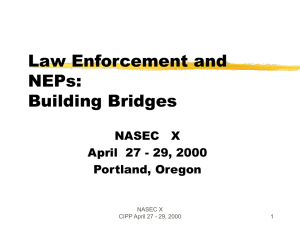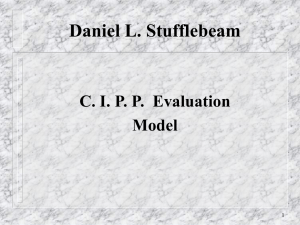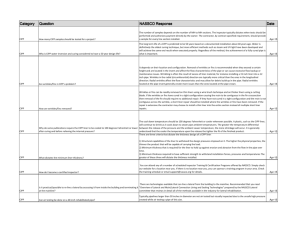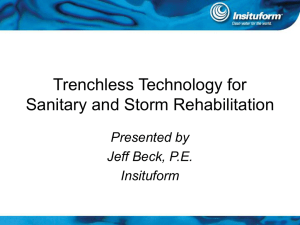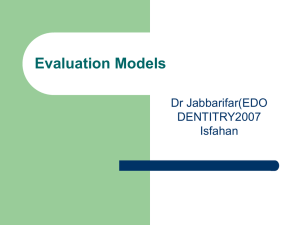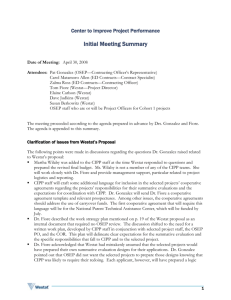Middle range theory
advertisement
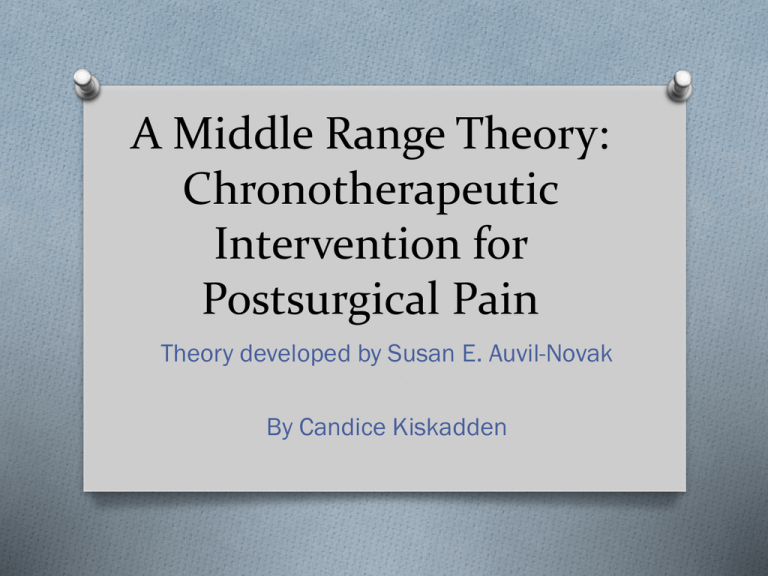
A Middle Range Theory: Chronotherapeutic Intervention for Postsurgical Pain Theory developed by Susan E. Auvil-Novak By Candice Kiskadden Overview Objectives O Discuss the theory of Chronotherapeutic Intervention O O O O O O for postsurgical pain (CIPP) Describe purpose and major concepts of CIPP List contexts for use of the CIPP theory Discuss nursing implications of CIPP Characterize the evidence of empirical testing of CIPP Outline current research articles using CIPP Communicate application to author’s practice Theory of Chronotherapeutic Intervention for Postsurgical Pain O CIPP theory states pain management is time O O O O dependent “Chronotherapeutic” approaches to pain Derived from theory, literature review, and studies Used three separate studies Analgesic utilization is a feedback loop for pain reception Who is Susan E. Auvil-Novak? O Authored four Susan E. Auvil-Novak, Ph.D, RN publications related to nursing O Publication focus was on time aspects Analysis and Evaluation CIPP Theory Purpose and Major Concepts O Prescriptive Mid-range Nursing Theory O Focused on postoperative pain perception O Pain is chronologically rhythmic O Different pain interventions needed at different levels through cycle O Maximize pain control and minimize adverse effects Context for Use O Theory has evidenced-based practice references O O O O O to past studies Clinical evidence supports theory of CIPP pharmacologic administration Can be applied to different types of pain stimuli Uses model of Individual Biologic Time Structure Use of CIPP pain management enhances postoperative outcomes Can be used for populations unable to verbally communicate: children, neonates Nursing Implications O Recent studies support congruency with CIPP O O O O Theory Patient controlled analgesics currently utilized postoperatively Theory is socially relevant and can be applied transculturally Increases the nursing evidence-based practice for pain control Heathcare professionals can provide better pain control with less adverse effects Evidence of Empirical Testing O Empirical validation of gynecologic oncology patients O Compounding evidence supported the theory in three separate studies O Testing has proved the theory to be accurate and valid O CIPP has been cited in many other scholarly publications Research Utilizing CIPP O Henly, S. J., Kallas, K. D., Klatt, C. M., & Swenson, K. K. (2003). The notion of time in symptom experiences. Nursing Research, 52(6), 410-417. O Sherwood, G. D., McNeill, J. A., Starck, P. L., & Disnard, G. (2003). Changing acute pain management outcomes in surgical patients. AORN Journal, 77(2), 374-395. Henly, Kallas, Klatt, & Swenson O Appropriately uses CIPP Theory to build new O O O O SET theory Uses theory to build on nursing practice Uses CIPP theory as empirical study to illustrate critical points Does not continue to develop CIPP theory Relevant to current evidence-based nursing practices Sherwood, McNeill, Starck, & Disnard O Appropriately uses CIPP theory to increase research knowledge O Supports hypothesis of postoperative pain management O Contributes to chronotherapeutic approach of pain assessment O Contends that CIPP theory enhances postoperative outcomes and precipitate recovery Practice Application O No direct application to Operating Room nursing O Preoperative assessment can include CIPP for greater pain management O Effective for immediately postoperative O OR nurses and CRNAs can influence prescriber for order of CIPP References Auvil-Novak , S. E. (1997). A middle-range theory of chronotherapeutic intervention for postsurgcial pain. Nursing Research, 46(2), 66-71. Retrieved from http://www.nursingcenter.com/lnc/JournalArticle?Article_ID=102327 Henly, S. J., Kallas, K. D., Klatt, C. M., & Swenson, K. K. (2003). The notion of time in symptom experiences. Nursing Research, 52(6), 410-417. Retrieved from http://www.nursingcenter.com/lnc/journalarticle?Article_ID=443674 McEwan, M., & Wills, E. M. (2011). Theoretical Basis for Nursing (3rd ed.). Philadelphia, PA: Lippincott Williams & Wilkins. Sherwood, G. D., McNeill, J. A., Starck, P. L., & Disnard, G. (2003). Changing acute pain management outcomes in surgical patients. AORN Journal, 77(2), 374-395. Retrieved from http://www.aornjournal.org/article/S0001-2092(06)61206-4/fulltext
